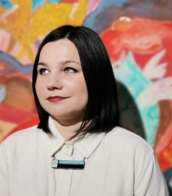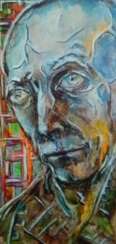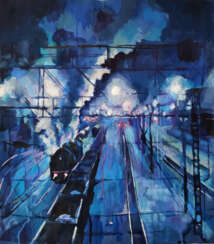4 Items by auctions and galleries:
акварель, рисунки и пастель
Недорогая картина. Интерьер. Еда. Живая еда.
Olga Chernova (b. 2007)  Shop Chernova Olga
Shop Chernova Olga
Olga Chernova
06.07.2007
Russia
Доброго времени суток, я художник! И моя цель принести в ваш дом красоту и уют. Большинство моих картин созданы именно для интерьера детской комнаты. В своих работах я отражаю всю красоту мира. Они очень привлекают детей, потому что эта особая техника очень близка им. Я пишу работы в разных жанрах, но все картины объединяет одна тема - счастье детей и мир их глазами. Для кого то мои работы не понятны и вселяются непонимание, но их не стоит воспринимать близко, ведь дети никогда не берут картины во что то с очень глубоким смыслом. Если быть проще, то можно понять все мои работы! Удачных покупок в моём мини магазинчике!
Artist shop
Chernova Olga
Russia
Number of products: 14
Убежище для зайцев
Aleksandra Proshina (b. 1981)  Shop Proshina Aleksandra
Shop Proshina Aleksandra

Aleksandra Proshina
07.11.1981
Russia
Меня зовут Александра Прошина. Я родом из г Рязань. Последние 15 лет живу и работаю в Москве. Творю под псевдонимом Beybuka.(одноимённый профиль в instagram).
Я создаю интуитивно понятные картины, передавая своё душевное состояние через цветовое решение и фактуру медиума. Моё портфолио- своеобразный дневник, чтобы запечатлеть то, что я чувствую в определённые периоды моей жизни. Интересуюсь проблемой состояния человеческого тела и души, личностью женщины.
⠀
Мой стиль продиктован влиянием экспрессионизма, абстракционизма и символизма, базируется на ассоциативности человеческого мышления. Физические свойства различных художественных медиумов (текучесть чернил и акварели или плотные наслоения масла и акрила) используются мной как условные знаки, позволяющие зрителю постичь то, что мне сложно выразить словами.
⠀
Так, например, эфемерность и уязвимость человеческого существования я воспроизвожу потёками чернил и акварели, царапинами на акриле, а красный подразумевает превосходство объекта или понятия.
⠀
Иногда я использую текст, чтобы усилить художественное высказывание.
⠀
Для меня рисовать- это ещё один вид коммуникации с людьми. Как будто я получаю некую информационную субстанцию из окружающего мира, перерабатываю её внутри и отдаю обратно.

Artist shop
Proshina Aleksandra
Russia
Number of products: 9
Пар/Steam
Alexander Baranoff (b. 2000)  Shop Baranoff Alexander
Shop Baranoff Alexander

Alexander Baranoff
13.08.2000
Russia
Родился и вырос в Москве. С раннего возраста интересовался искусством. В 2014 году закончил школу искусств им. Римского-Корсакова. В 2020 получил специальность живописца-преподавателя. С 2019 работаю педагогом студии изобразительного искусства.
Пишу в разных техниках и жанрах: от абстракций и до реализма.

Artist shop
Baranoff Alexander
Russia
Number of products: 5









